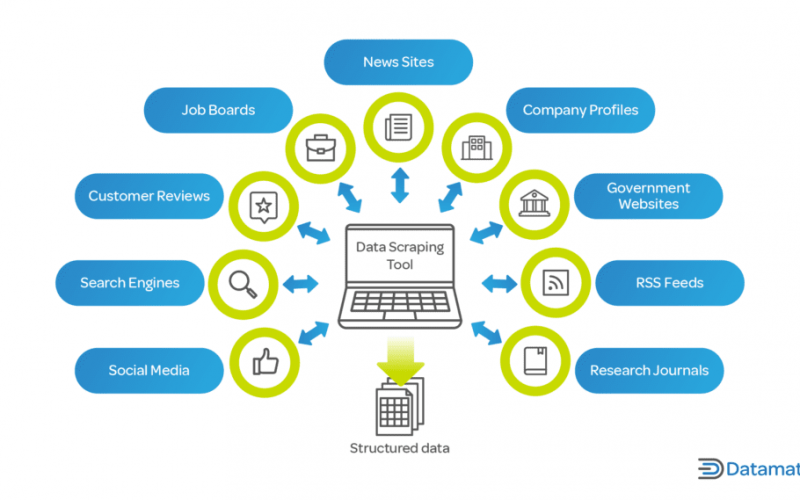As technology continues to evolve, several emerging trends are shaping the field of data scraping and web crawling. Here are some notable trends to watch:
- Advanced AI and Machine Learning Techniques:
- The integration of artificial intelligence (AI) and machine learning (ML) algorithms is enhancing the capabilities of data scraping and web crawling.
- AI-powered scraping models can automatically adapt to website changes, handle dynamic content, and extract structured data more accurately.
- Headless Browsers and JavaScript Rendering:
- Websites increasingly rely on client-side rendering using JavaScript frameworks, making traditional scraping methods less effective.
- Headless browsers, such as Puppeteer and Selenium, enable scraping scripts to interact with dynamic websites by rendering JavaScript and extracting data.
- Natural Language Processing (NLP) for Unstructured Data:
- NLP techniques are being applied to extract insights from unstructured data, such as textual content, user reviews, and social media posts.
- Sentiment analysis, topic modeling, and named entity recognition are being used to analyze and categorize unstructured data scraped from various sources.
- Deep Learning for Image and Video Scraping:
- Deep learning algorithms, such as convolutional neural networks (CNNs), are being employed for image and video scraping and analysis.
- These techniques enable the automated extraction of information from images, including object detection, facial recognition, and visual data analysis.
- Ethical and Responsible Data Scraping Practices:
- With increased awareness of privacy concerns, there is a growing emphasis on ethical and responsible data scraping practices.
- Scrappers are adopting privacy-by-design principles, implementing data anonymization techniques, and ensuring compliance with regulations like GDPR.
- Web Scraping as a Service:
- Legal and Regulatory Developments:
- The legal landscape around web scraping is evolving, with new regulations and court rulings shaping the boundaries of what is permissible.
- Staying up-to-date with legal requirements, such as data protection laws and terms of service agreements, is essential for compliant scraping practices.
- Anti-Scraping Technologies:
- Websites are adopting measures to detect and prevent scraping activities, including CAPTCHA challenges, IP blocking, and bot detection systems.
- Scrappers need to adapt to these anti-scraping technologies and employ strategies to circumvent them without violating legal or ethical boundaries.
- Distributed and Scalable Scraping Architectures:
- As the volume and complexity of scraped data increase, distributed and scalable scraping architectures are becoming more prevalent.
- Technologies like cloud computing, containerization, and serverless computing allow efficient and scalable data scraping operations.
These emerging trends are reshaping the landscape of data scraping and web crawling, providing new opportunities and challenges. Staying informed about these trends and leveraging advanced techniques can help ensure the effectiveness, compliance, and ethical use of scraping practices.
SHARE
